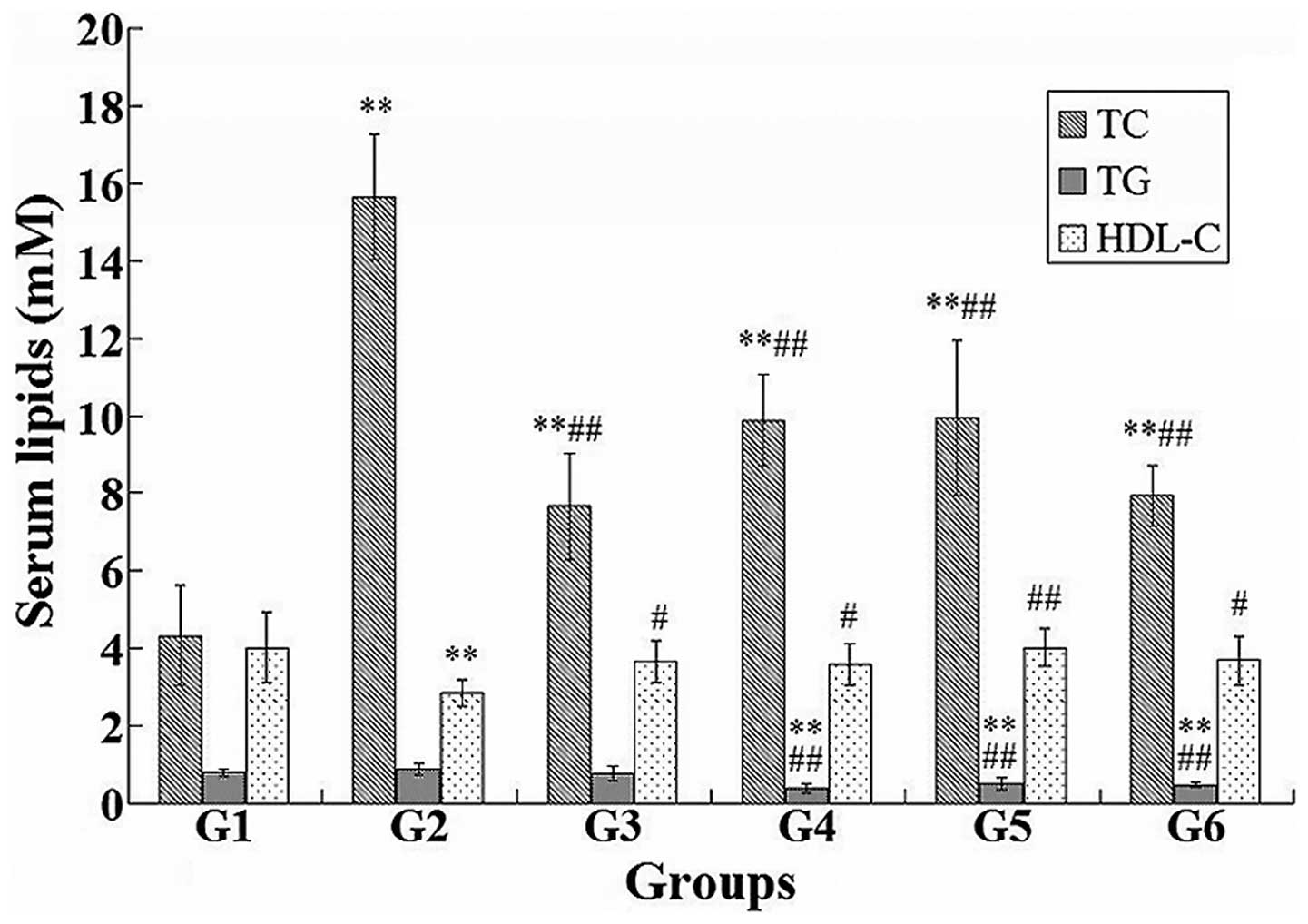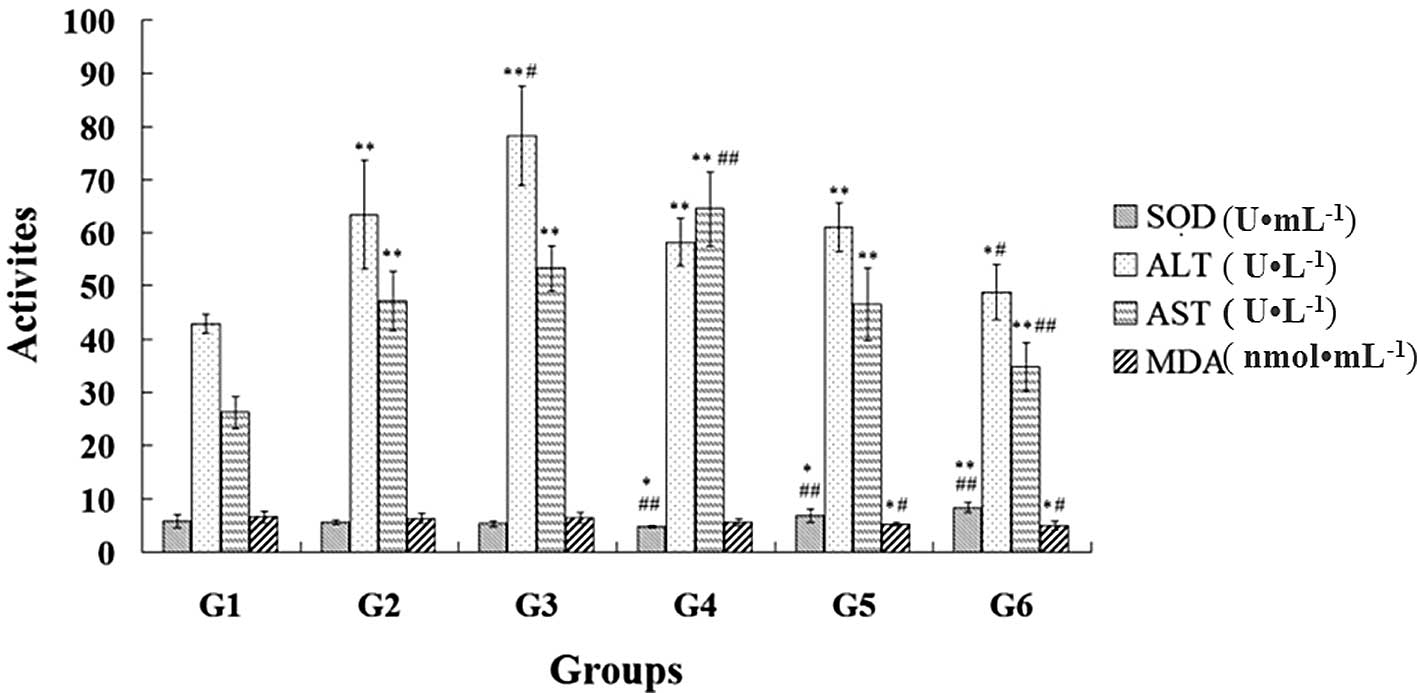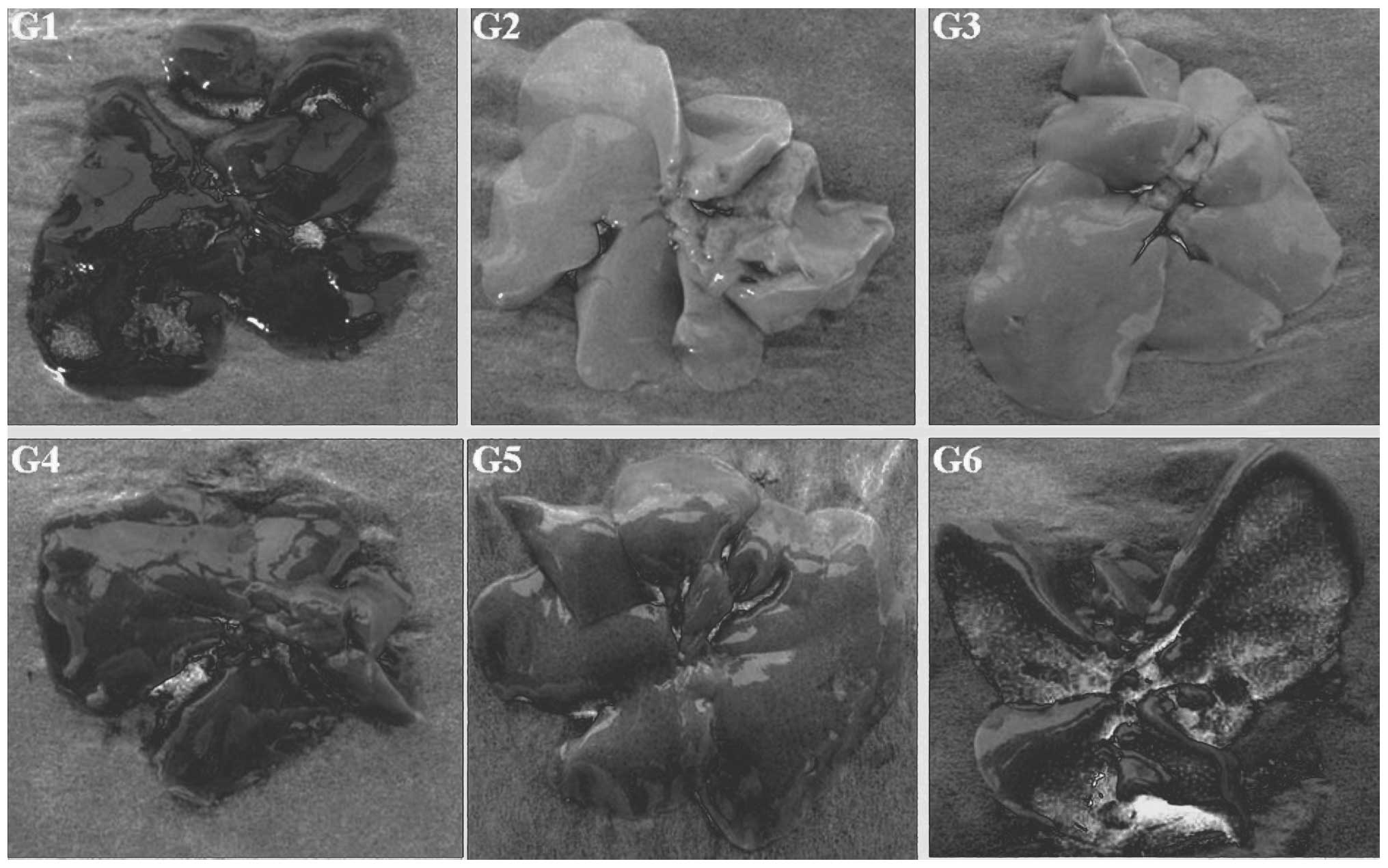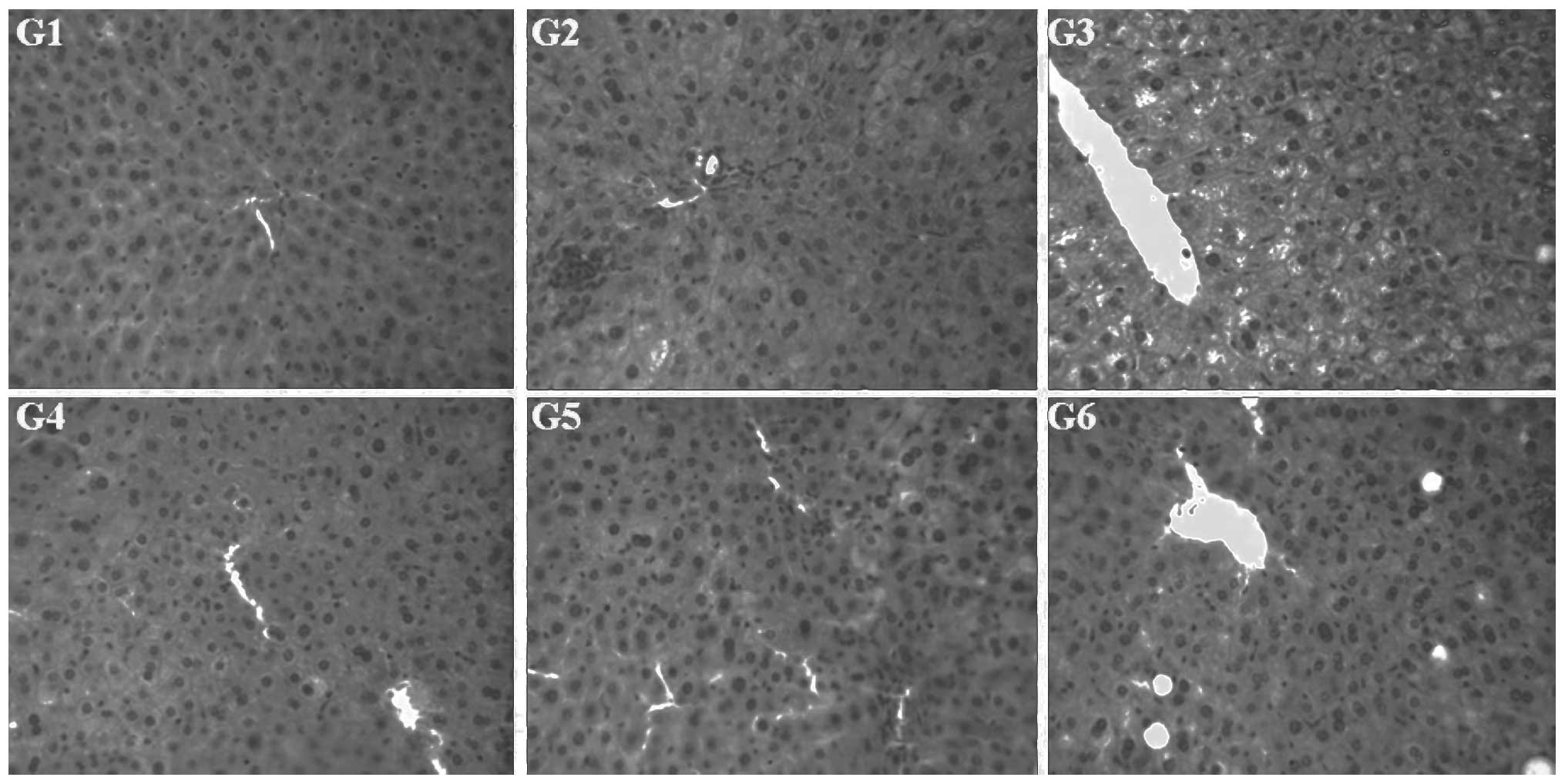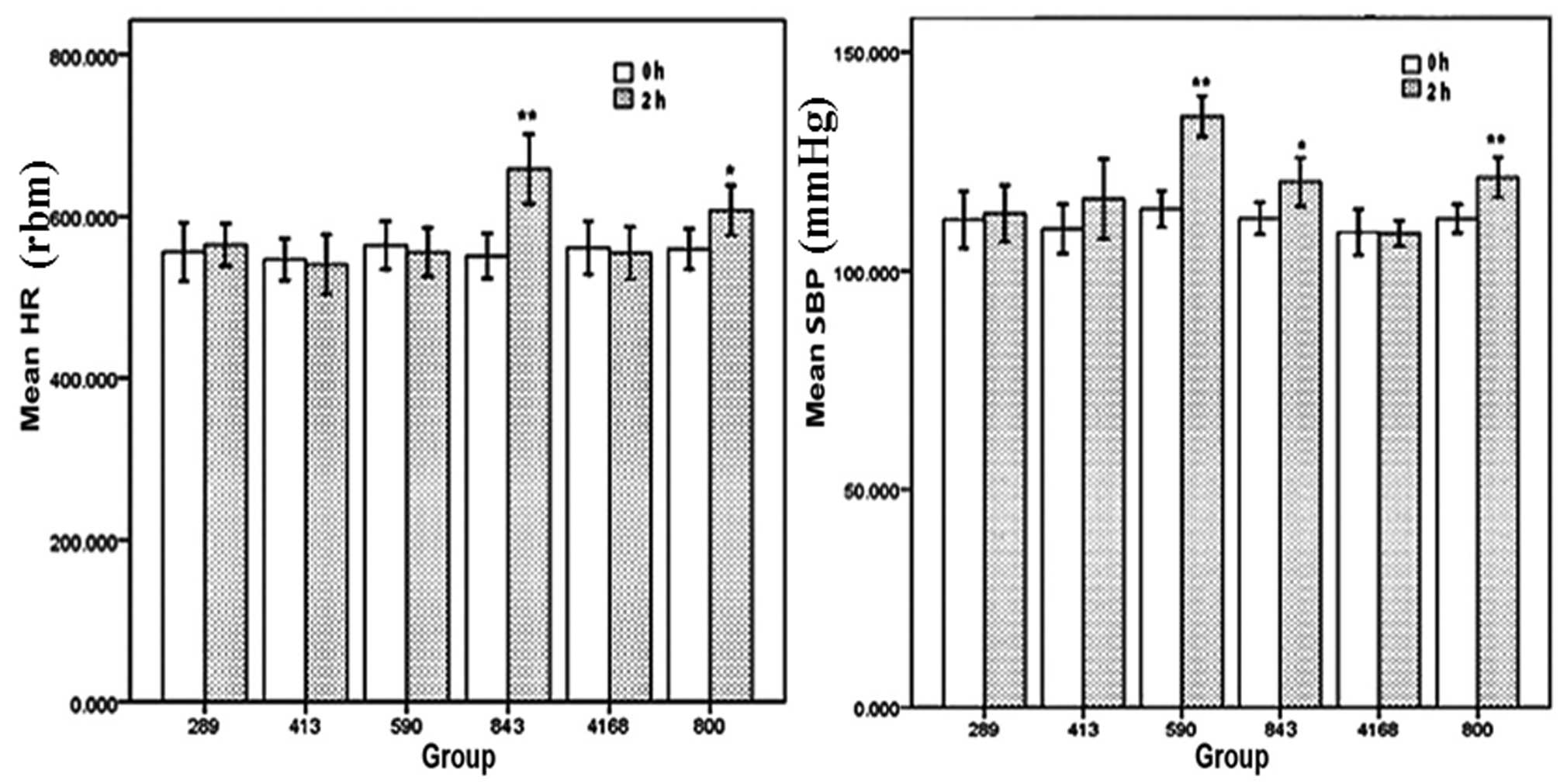|
1
|
Lind L and Lithell H: Decreased peripheral
blood flow in the pathogenesis of the metabolic syndrome comprising
hypertension, hyperlipidemia, and hyperinsulinemia. Am Heart J.
125:1494–1497. 1993. View Article : Google Scholar : PubMed/NCBI
|
|
2
|
Colomé C, Martínez-González J, Vidal F, de
Castellarnau C and Badimon L: Small oxidative changes in
atherogenic LDL concentrations irreversibly regulate adhesiveness
of human endothelial cells: effect of the lazaroid U74500A.
Atherosclerosis. 149:295–302. 2000. View Article : Google Scholar : PubMed/NCBI
|
|
3
|
Steinberg D: Lewis A. Conner Memorial
Lecture. Oxidative modification of LDL and atherogenesis.
Circulation. 95:1062–1071. 1997. View Article : Google Scholar : PubMed/NCBI
|
|
4
|
Cockerill GW, Saklatvala J, Ridley SH, et
al: High-density lipoproteins differentially modulate
cytokine-induced expression of E-selectin and cyclooxygenase-2.
Arterioscler Thromb Vasc Biol. 19:910–917. 1999. View Article : Google Scholar : PubMed/NCBI
|
|
5
|
Khan BV, Harrison DG, Olbrych MT,
Alexander RW and Medford RM: Nitric oxide regulates vascular cell
adhesion molecule 1 gene expression and redox-sensitive
transcriptional events in human vascular endothelial cells. Proc
Natl Acad Sci USA. 93:9114–9119. 1996. View Article : Google Scholar : PubMed/NCBI
|
|
6
|
Assmann G and Schulte H: The Prospective
Cardiovascular Münster (PROCAM) study: prevalence of hyperlipidemia
in persons with hypertension and/or diabetes mellitus and the
relationship to coronary heart disease. Am Heart J. 116:1713–1724.
1988. View Article : Google Scholar : PubMed/NCBI
|
|
7
|
Chiu JH, Abdelhadi RH, Chung MK, et al:
Effect of statin therapy on risk of ventricular arrhythmia among
patients with coronary artery disease and an implantable
cardioverter-defibrillator. Am J Cardiol. 95:490–491. 2005.
View Article : Google Scholar : PubMed/NCBI
|
|
8
|
Maron DJ, Fazio S and Linton MF: Current
perspectives on statins. Circulation. 101:207–213. 2000. View Article : Google Scholar : PubMed/NCBI
|
|
9
|
Kohli P, Desai NR, Giugliano RP, et al:
Design and rationale of the LAPLACE-TIMI 57 trial: a phase II,
double-blind, placebo-controlled study of the efficacy and
tolerability of a monoclonal antibody inhibitor of PCSK9 in
subjects with hypercholesterolemia on background statin therapy.
Clin Cardiol. 35:385–391. 2012. View Article : Google Scholar : PubMed/NCBI
|
|
10
|
Armitage J: The safety of statins in
clinical practice. Lancet. 370:1781–1790. 2007. View Article : Google Scholar : PubMed/NCBI
|
|
11
|
Neuvonen PJ, Niemi M and Backman JT: Drug
interactions with lipid-lowering drugs: mechanisms and clinical
relevance. Clin Pharmacol Ther. 80:565–581. 2006. View Article : Google Scholar : PubMed/NCBI
|
|
12
|
Conforti A, Magro L, Moretti U, et al:
Fluvastatin and hepatic reactions: a signal from spontaneous
reporting in Italy. Drug Saf. 29:1163–1172. 2006. View Article : Google Scholar : PubMed/NCBI
|
|
13
|
Abourashed EA, El-Alfy AT, Khan IA and
Walker L: Ephedra in perspective - a current review. Phytother Res.
17:703–712. 2003. View
Article : Google Scholar : PubMed/NCBI
|
|
14
|
Soni MG, Carabin IG, Griffiths JC and
Burdock GA: Safety of ephedra: lessons learned. Toxicol Lett.
150:97–110. 2004. View Article : Google Scholar : PubMed/NCBI
|
|
15
|
Kuang H, Yonggang X, Yang B, Wang Q and
Wang Y: Screening and comparison of the immunosuppressive
activities of polysaccharides from the stems of Ephedra sinica
Stapf. Carbohydrate Polymers. 83:787–795. 2011. View Article : Google Scholar
|
|
16
|
Xia Y, Kuang H, Yang B, Wang Q, et al:
Optimum extraction of acidic polysaccharides from the stems of
Ephedra sinica Stapf by Box-Behnken statistical design and its
anti-complement activity. Carbohydrate Polymers. 84:282–291. 2011.
View Article : Google Scholar
|
|
17
|
Shekelle PG, Hardy ML, Morton SC, et al:
Efficacy and safety of ephedra and ephedrine for weight loss and
athletic performance: a meta-analysis. JAMA. 289:1537–1545.
2003.PubMed/NCBI
|
|
18
|
Kalman D, Incledon T, Gaunaurd I, Schwartz
H and Krieger D: An acute clinical trial evaluating the
cardiovascular effects of an herbal ephedra-caffeine weight loss
product in healthy overweight adults. Int J Obes Relat Metab
Disord. 26:1363–1366. 2002. View Article : Google Scholar : PubMed/NCBI
|
|
19
|
Haller CA and Benowitz NL: Adverse
cardiovascular and central nervous system events associated with
dietary supplements containing ephedra alkaloids. N Engl J Med.
343:1833–1838. 2000. View Article : Google Scholar : PubMed/NCBI
|
|
20
|
al-Khalil S, Alkofahi A, el-Eisawi D and
al-Shibib A: Transtorine, a new quinoline alkaloid from Ephedra
transitoria. J Nat Prod. 61:262–263. 1998. View Article : Google Scholar : PubMed/NCBI
|
|
21
|
Purev O, Pospísil F and Motl O: FPaOM:
Flavonoids from Ephedra sinica Stapf. Collect Czech Chem Commun.
53:3193–3196. 1988. View Article : Google Scholar
|
|
22
|
Starratt AN and Caveney S:
Quinoline-2-carboxylic acids from Ephedra species. Phytochemistry.
42:1477–1478. 1996. View Article : Google Scholar
|
|
23
|
Konno C, Mizuno T and Hikino H: Isolation
and hypoglycemic activity of ephedrans A, B, C, D and E, glycans of
Ephedra distachya herbs. Planta Med. 162–163. 1985. View Article : Google Scholar : PubMed/NCBI
|
|
24
|
Chumbalov TK, Chekmeneva LN and Polyakov
VV: Phenolic acids of Ephedra equisetina. Chemistry of Natural
Compounds. 13:238–239. 1977. View Article : Google Scholar
|
|
25
|
Zhang L, Zou G and Yang T: Studies on
extraction of water-soluble polysaccharides and the function of
cleaning oxygen free-radical function of ephedra. Amino Acids and
Biotic Resources. 22:24–26. 2000.
|
|
26
|
OECD (Organisation for Economic
Co-operation and Development). OECD Guidelines for the Testing of
Chemicals. Guideline 425: Acute Oral Toxicity-Up-and-Down
Procedure. 1932001.
|
|
27
|
Karber G: Determination of LD50. Arch Exp
Pathol Pharma. 162:4801931.
|
|
28
|
Wilson PW, Abbott RD and Castelli WP: High
density lipoprotein cholesterol and mortality. The Framingham Heart
Study Arteriosclerosis. 8:737–741. 1988.
|
|
29
|
Assmann G and Nofer JR: Atheroprotective
effects of high-density lipoproteins. Annu Rev Med. 54:321–341.
2003. View Article : Google Scholar
|
|
30
|
Rice-Evans CA, Miller NJ, Bolwell PG,
Bramley PM and Pridham JB: The relative antioxidant activities of
plant-derived polyphenolic flavonoids. Free Radic Res. 22:375–383.
1995. View Article : Google Scholar : PubMed/NCBI
|
|
31
|
Tripathi YB, Singh BK, Pandey RS and Kumar
M: BHUx: a patent polyherbal formulation to prevent
atherosclerosis. Evid Based Complement Alternat Med. 2:217–221.
2005. View Article : Google Scholar : PubMed/NCBI
|
|
32
|
Ljubuncic P, Dakwar S, Portnaya I, et al:
Aqueous extracts of Teucrium polium possess remarkable antioxidant
activity in vitro. Evid Based Complement Alternat Med. 3:329–338.
2006. View Article : Google Scholar : PubMed/NCBI
|
|
33
|
Punitha IS, Rajendran K and Shirwaikar A
and Shirwaikar A: Alcoholic stem extract of Coscinium fenestratum
regulates carbohydrate metabolism and improves antioxidant status
in streptozotocin-nicotinamide induced diabetic rats. Evid Based
Complement Alternat Med. 2:375–381. 2005. View Article : Google Scholar : PubMed/NCBI
|
|
34
|
Toyokuni S, Tanaka T, Kawaguchi W, et al:
Effects of the phenolic contents of Mauritian endemic plant
extracts on promoter activities of antioxidant enzymes. Free Radic
Res. 37:1215–1224. 2003. View Article : Google Scholar
|
|
35
|
Ralay Ranaivo H, Rakotoarison O, Tesse A,
et al: Cedrelopsis grevei induced hypotension and improved
endothelial vasodilatation through an increase of Cu/Zn SOD protein
expression. Am J Physiol Heart Circ Physiol. 286:H775–H781. 2004.
View Article : Google Scholar
|
|
36
|
Paradis V, Mathurin P, Kollinger M, et al:
In situ detection of lipid peroxidation in chronic hepatitis C:
correlation with pathological features. J Clin Pathol. 50:401–406.
1997. View Article : Google Scholar : PubMed/NCBI
|
|
37
|
Yadav D, Hertan HI, Schweitzer P, Norkus
EP and Pitchumoni CS: Serum and liver micronutrient antioxidants
and serum oxidative stress in patients with chronic hepatitis C. Am
J Gastroenterol. 97:2634–2639. 2002. View Article : Google Scholar : PubMed/NCBI
|
|
38
|
Kako KJ: Free radical effects on membrane
protein in myocardial ischemia/reperfusion injury. J Mol Cell
Cardiol. 19:209–211. 1987. View Article : Google Scholar : PubMed/NCBI
|
|
39
|
Harris ED: Regulation of antioxidant
enzymes. FASEB J. 6:2675–2683. 1992.PubMed/NCBI
|
|
40
|
Limdi JK and Hyde GM: Evaluation of
abnormal liver function tests. Postgrad Med J. 79:307–312. 2003.
View Article : Google Scholar : PubMed/NCBI
|
|
41
|
State Pharmacopoeia Commission of the
People’s Republic of China. Pharmacopoeia of the People’s Republic
of China. 8th edition. People’s Medical Publishing House; Beijing:
Part 1. pp. 2242005
|
















